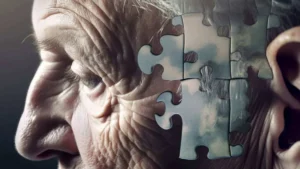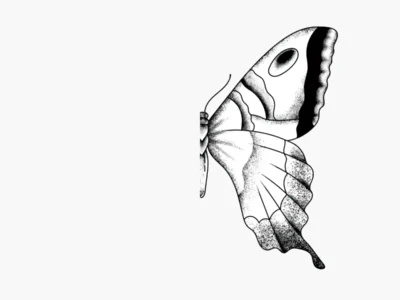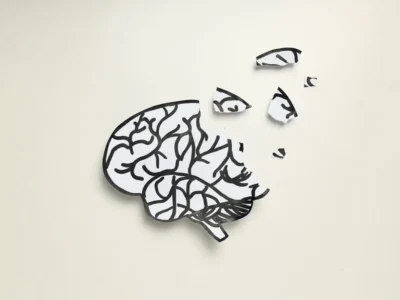Neuropsychologist Diana Carolina Gómez Blanco shows how non-pharmacological interventions can be a key tool for managing psychological and behavioral symptoms in people with dementia.
“A person with dementia lives in a present where things disappear, explanations are forgotten and conversations lose their meaning, where love is the only alternative.”
In recent years the increase in the older adult population worldwide has led to a higher incidence in the detection of neurocognitive disorders such as dementias.
This increase in incidence has encouraged research both in prevention and treatment, not only of cognitive symptoms but also psychological and behavioral ones, which bring family and healthcare system burdens, since they worsen cognitive and functional decline, not only generating suffering for the patient and their caregiver, but also increasing the risk of institutionalization, reducing the quality of life of the patient and their relatives, raising stress levels of caregivers and nursing staff, and generating greater financial cost.
What are the psychological and behavioral symptoms of dementia (SPCD)
The psychological and behavioral symptoms of dementia (SPCD) refer to a set of symptoms and signs that include psychiatric symptoms and behavioral problems that may appear in people with dementia, and that can occur at virtually any time during the illness, with a highly variable clustering pattern, being influenced by modifiable psychological and environmental factors, and offering treatment opportunities (Olazarán-Rodríguez & Agüera-Ortiz, 2012, p 598).
The more complex and elaborated psychological symptoms from a mental point of view are obtained through the press conference with the patient and their family. This is the case, for example, with depression, anxiety or psychosis. Meanwhile, behavioral symptoms are obtained through direct observation of the patient, such as aggressiveness, motor hyperactivity or disinhibition.
The psychological and behavioral symptoms of dementia (SPCD) are highly prevalent and different factors in their genesis have been identified that are the result of a complex interaction of biological, psychological, social and environmental factors acting on an individual with biological predisposition.
Among these factors are frontal or other area damage or dysfunction, alterations in neurotransmitters, as well as premorbid personality, since the loss of cognitive capacities ends up bringing out the most basic personality traits.
Likewise, the presence of stressful life events or simply those that the patient is unable to process, the loss of relationships or of other relevant stimuli, activities or functions, and the failure to meet basic biological or psychological needs, can trigger the symptoms.
On the other hand, paternalistic, authoritarian or infantilizing treatment, exasperation, ignoring the patient, imposing things or power struggles, or asking the same question repeatedly for the patient to remember it, are behaviors that, when present in caregivers, can create or maintain the behavioral symptoms of dementia (SPCD).
SPCD are categorized into psychological symptoms and behavioral symptoms.
Psychological symptoms
Among the psychological symptoms of dementia are delusions with a prevalence between 10% and 73%, the delusion of persecution being the most frequent. These are followed by hallucinations, with a prevalence of 12% to 49%, with visions being the most common.
On the other hand, there are also misidentifications, with a 16% prevalence among patients with Alzheimer’s. In addition, depression, anxiety and apathy are also common. In the specific case of the latter, apathy is one of the most common symptoms, with a 50% prevalence.
Behavioral symptoms
Among the behavioral symptoms stand out wandering or pacing (one of the most problematic), agitation/aggression, resistance to care, inappropriate sexual behaviors and catastrophic reactions, such as anger or verbal and physical aggression. The presence of each of these symptoms tends to differ in each dementia subtype, although each patient may have various symptoms even if they are not characteristic of their type of dementia (Pérez Romero, 2018, p.379).
It is important to bear in mind that these symptoms should receive treatment. Below are some of the most frequent ones (Alzheimer Catalunya Foundation, 2022):
Mood disturbances
- Depression: Persistent feelings of sadness, lack of hope, feeling like a burden. It can cause changes in nutrition, fatigue, and other psychological and behavioral symptoms of dementia (SPCD) such as apathy or loss of functionality.
- Apathy: Disconnection from the environment. There is no interest in carrying out activities and little or no emotional expression is present.
- Anxiety: Distress usually caused by the feeling of loss of control in everyday situations.
- Aggressiveness: Verbal or physical, which causes discomfort to those around them. Unjustified resistance to receiving help.
- Disinhibition: Loss of modesty or shame when expressing oneself both verbally and bodily. It can lead to sexual behaviors considered inappropriate.
Vegetative disturbances
- Sleep: Alterations of the sleep cycle. Sleeping during the day and waking up at night, insomnia, fragmented sleep, etc.
- Nutrition: Increase or decrease in appetite.
Perceptual disturbances
- Delusions: Beliefs or thoughts that do not correspond to reality.
- Hallucinations: Experiencing sensations and experiences that are not real, without being able to discern between what is and what is not.
Disturbances in motor activity
- Motor hyperactivity. Moving without apparent explanation, which can lead to wandering.
Guidelines for managing the psychological and behavioral symptoms of dementia (SPCD)
Initial management of the psychological and behavioral symptoms of dementia (SPCD)
All these symptoms pose a clear challenge when intervening and providing the necessary guidance to the family, so the initial management of the psychological and behavioral symptoms of dementia (SPCD) should be based on understanding the underlying biological process, adopting the patient’s personal perspective, searching for and modifying triggering factors, and adopting an attitude that allows regaining trust and the sense of control.
It is also important to explain the origin of these symptoms to families, as well as to warn that their complete elimination is not always possible. Sometimes it is enough to be satisfied with reducing the frequency or intensity of the symptoms, always prioritizing the patient’s well-being.
Likewise, as important as what should be done, it is also valuable to know what should be avoided. Often SPCD do not constitute an imminent risk or danger to the person or their family, and may constitute a way of compensating for the disease such as repetitive questions. Other times they are personal reactions that should be respected, so accompanying or respecting solitude may be the best attitude on some occasions.

Subscribe
to our
Newsletter
General indications for managing the psychological and behavioral symptoms of dementia (SPCD)
Before outlining possible treatments for SPCD, it is important to mention some general indications to bear in mind for managing these symptoms:
- Thought disturbance: Familiar environment; avoid triggers; orient or distract to other topics; do not argue, joke, reinforce or increase the content of the altered thought.
- Illusions and hallucinations: Similar to the above.
- Aggressiveness: Respect premorbid preferences, promote autonomy and privacy, approach from the front, use nonverbal language, warn, explain, negotiate and reinforce cooperation; avoid causing the patient to feel their dignity diminished (for example: changing diapers without tact, leaving the bathroom door open, talking in their presence as if they did not exist, etc.). For specific problems, delve into personal history and carry out a thorough analysis of triggers (for example: if in the shower the jet is what causes irritation, we would solve it by interposing the hand to soften the contact of the water with the skin).
- Depression: Identify the possible trigger (admission to a care home, death of a spouse, etc.) and modify it as far as possible (for example: change floor if the severe deterioration of other residents causes the depression); somewhat brighter lighting than usual, open and pleasant spaces, social interaction, conversation, pleasurable activities (walks, games, etc.), recall of pleasant or successful past events.
- Anxiety: Reduction of stimuli; continuous explanations about what is happening; avoid new situations; distractors; offer security verbally and nonverbally; in mild dementia, cognitive restructuring (for example: learning to trust the caregiver).
- Euphoria: Do not imitate or reinforce the patient, do not trivialize; try to place them in others’ shoes; correct or offer affection respectfully.
- Apathy: Verbal or physical prompting; imitation (group activities), modeling; stimuli with movement and affective component (music, animals, etc.); propose or persuade for activities of maximum enjoyment, without possibility of error; help the caregiver understand and accept the symptom.
- Disinhibition: Study possible triggers (removing clothing may be due to heat or a tag that irritates the neck); physical activity, playful activities, social contact; respect, humor, flexibility; do not judge, reinforce or trivialize; understand the behavior in the context of the disease; teach others to live with the symptoms; limit restraint to avoid loss of dignity of all involved.
- Irritability: Cognitive restructuring in mild dementia (accept limitations, alternative and realistic activities, etc.); study and environmental modification (noise, social environment, caregiver treatment, etc.).
- Motor hyperactivity: Secure footwear and spaces, constant supervision; walk beside and guide; allow the activity, offer objects to manipulate; do not try to stop them.
- Repeated vocalizations: Check basic needs with special attention to social isolation, lack or excess of stimuli (e.g., noise) and pain; reinforce moments of calm (touch them, hold their hand, talk about trivial matters, etc.).
- Sleep disturbance: Activities, lighting, diet, reduced naps, delay bedtime, avoid noises or other nocturnal stimuli.
- Increased appetite: Reduce or avoid exposure to foods or substances.
- Decreased appetite: Foods and environment according to premorbid taste; reinforce culinary aromas, flavors and presentation of foods; hygiene and dental check, lingual tartar cleaning; gradual help (start with verbal prompting); conversation during meals.
Treatment of the psychological and behavioral symptoms of dementia (SPCD)
In this regard it is important to be clear about how families and professionals can treat these symptoms.
Pharmacological treatment of BPSD
In the case of pharmacological treatments, they are sometimes prioritized due to pressure from family members or professional caregivers because of the stress generated by the psychological and behavioral problems of dementia. Therefore, a drug is often offered as an immediate solution to them.
However, this treatment must be framed within a series of considerations and fundamental principles. First, it must be verified that there is no contraindication or intolerance on the part of the patient and take into account side effects. Likewise, it is important to remember that certain psychological and behavioral symptoms of dementia (SPCD) have a limited course so that, over time, they may disappear. For this reason, it is vital to:
- Weigh the risks and benefits; regularly review the need for their administration by progressively reducing doses until verifying whether they are still useful;
- as well as personalize the treatment for each patient in particular and the specific characteristics of their physical comorbidity, concomitant treatments and adverse effect profile.
Pharmacological treatments should not be considered as a first option or as the only response in the treatment of SPCD, but general intervention strategies or the use of non-pharmacological therapies should first be exhausted to reduce them, providing a better quality of life for the patient.
Non-pharmacological treatment of BPSD
Non-pharmacological therapies are defined as a non-chemical, theoretically supported, focused and replicable intervention, performed on the patient or the caregiver and potentially capable of obtaining a relevant benefit. They represent a varied set of strategies and interventions aimed at stimulating cognitive and functional capacities, but which also help reduce SPCD.
Among the most frequent non-pharmacological therapies are:
- Stimulation cognitive (cognitive stimulation),
- activities of daily living,
- geronto-gymnastics,
- art therapy,
- music therapy,
- behavioral intervention,
- training of the professional caregiver of the person with dementia,
- caregiver education,
- validation therapy,
- laughter therapy,
- doll therapy,
- Snoezelen sensory stimulation.
Although there are many more and certainly others will be developed in the future. Olazarán et al note, after a systematic review of the available literature on non-pharmacological therapies (NPTs) that “NPTs can realistically and affordably contribute to the improvement and management of care in EATR (both of the patients and of the caregivers). Unlike what happens with drugs, non-pharmacological interventions are usually low cost, focusing spending on human resources, and not on the use of costly technologies or drugs” (Olazarán et al, 2010, p.171).
Non-pharmacological therapies (NPTs) can be patient-oriented, caregiver-oriented and professional caregiver-oriented. “Complementary therapies based on Physical Activity and rehabilitation, cognitive stimulation and occupational therapy with music, animals and art, applied and maintained over time, are an alternative that, whether combined or alone, are effective in preventing, slowing and decelerating the symptoms of Alzheimer’s disease, especially in the initial phase” (Ruiz-Hernández et al, 2023, p.18).
Conclusion
Thus, although this article falls short of detailing all the benefits of non-pharmacological therapies (NPT) in the intervention of the psychological and behavioral symptoms of dementia (SPCD), it is possible to affirm that meeting the patient’s basic needs, adapting the environment, caregiver training, continuous counseling and support for patients are powerful tools to prevent their appearance.
Once these symptoms appear, the first response should not be pharmacological but, on the contrary, identify the primary or destabilizing symptoms and intervene on them.
In real life, therefore, the management of the psychological and behavioral symptoms of dementia largely depends on the caregiver’s and institutions’ ability and willingness to collaborate with those environmental measures, implement stimulation programs and use non-pharmacological therapies, making use of pharmacies within a care plan designed, evaluated and personalized by a multidisciplinary team; this will avoid unwanted complications and, above all, lead to a better quality of life for the patient.
Bibliography
- Alzheimer Catalunya Foundation. (2022, July 4). What are the psychological and behavioral symptoms of dementias? Alzheimer Catalunya. Retrieved October 15, 2024, from https://alzheimercatalunya.org/es/que-son-los-sintomas-psicologicos-y-conductuales-de-las-demencias/
- Olazarán, J. (2010). Efficacy of non-pharmacological therapies in Alzheimer’s disease: a systematic review. Dement Geriatr Cogn Disord, 30(1), 161-178. DOI: 10.1159/000321458
- Olazarán-Rodríguez, J., & Agüera-Ortiz, L. F. (2012). Psychological and behavioral symptoms of dementia: prevention, diagnosis and treatment. Revista de neurología, 55(10), 598-608. https://mariawolff.org/wp-content/uploads/documentos/olazaran.pdf
- Pérez Romero, A. (2018). The importance of psychological and behavioral symptoms (SPCD) in Alzheimer’s disease. Revista Neurología, 33(6), 378-384. Elsevier. DOI: 10.1016/j.nrl.2016.02.024
- Ruíz-Hernández M, Mur-Gomar R, Montejano-Lozoya R. Effectiveness of non-pharmacological therapies in people with Alzheimer’s: a systematic review. Rev Esp Salud Pública. 2023; 97: October 18 e202310086
If you enjoyed this blog post about interventions for psychological and behavioral problems in dementias, you will likely be interested in these NeuronUP articles:
“This article has been translated. Link to the original article in Spanish:”
Intervenciones para problemas psicológicos y conductuales en demencias







 Musical Accessibility Program
Musical Accessibility Program
Leave a Reply